First stop on my Madagascar trip is the Tsingy Stone Forest, an isolated and hard to reach national park famous for its towering limestone rocks. Getting there is an adventure in and of itself but it’s all rewards at the end. This park has some of the most amazing scenery I’ve ever seen, great hiking, and is also home to numerous lemur species. Make sure to read my full Madagascar itinerary as well as my guide to traveling through Madagascar.
Antananarivo to Tsingy Stone Forest
Upon landing in Antananarivo, the nation’s capital, we wasted no time and decided to head straight to the forest. Our driver, Serge, was waiting at the airport for us, and although I specifically requested an English speaking driver (as my friend spoke no French), this guy was definitely not one of them. The rest of the 3 weeks we’d be spending together would just be me speaking French to him while my friend descended into extreme boredom.
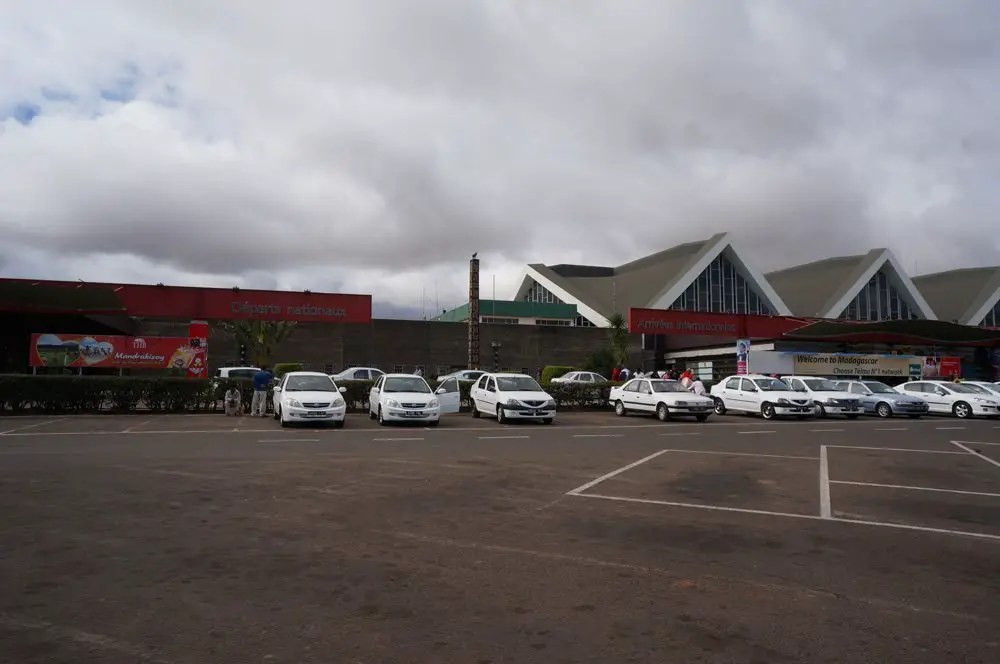

Driving from Tana to Antsirabe
Landing in Antananarivo around 2pm, we only had a few hours of daylight left and drove straight for Antsirabe to spend the night. Driving through Antananarivo, it was evident that this was unlike any place I’ve ever seen. The streets were so narrow and packed full of people and animals. The areas that were not filled with old buildings were home to incredibly terraced rice producing hills (rice is the main staple in Malagasy diets). Words can only describe so much but this place was truly different than other parts of the world.
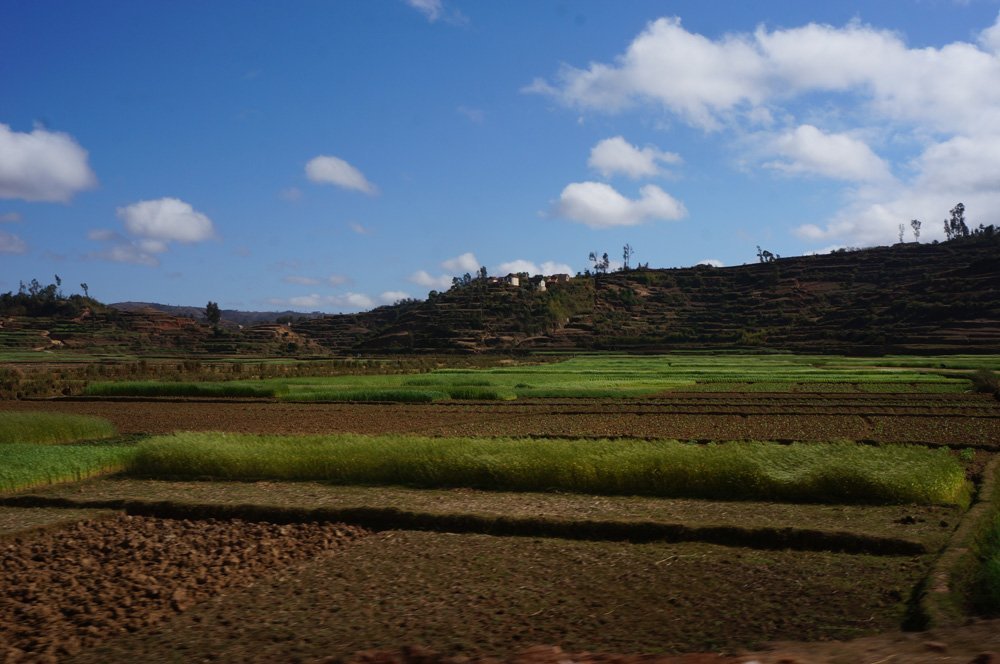
The area around Antananarivo are the highlands, characterized by rolling hills, terraced to perfection, making for a scenic drive all the way to Antsirabe. We enjoyed our first Madagascar sunset here and it did not disappoint. We arrived in Antsirabe four hours later and it was here we got our first taste of Madagascar towns at night.
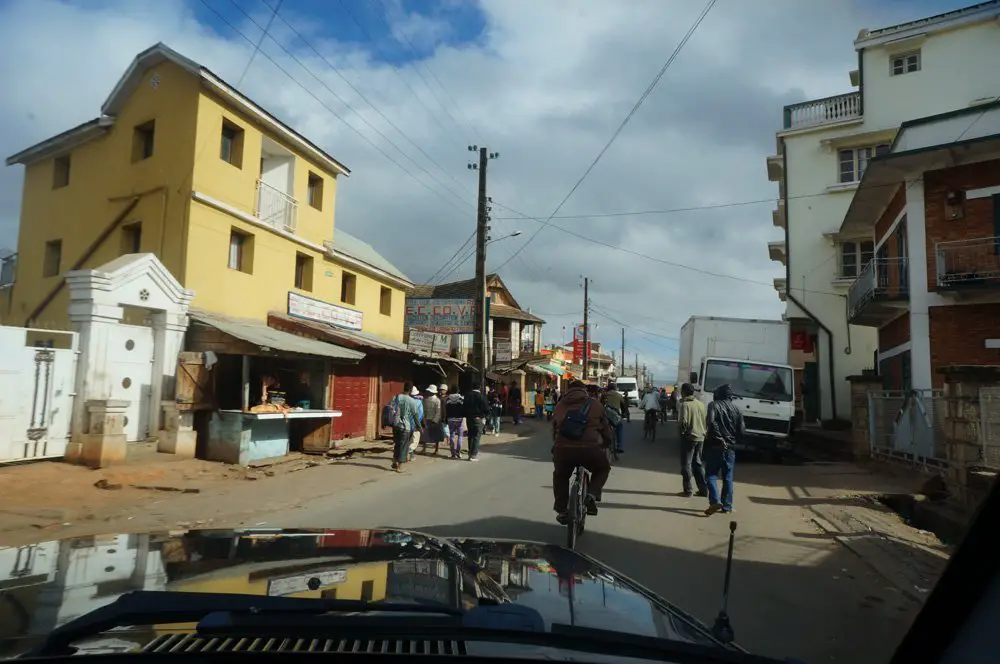
Antsirabe is one of the larger towns in Madagascar, and home to many French colonial style homes. Nevertheless, none of the towns in Madagascar have any street lights so come nighttime, the entire town looks like a ghost town. Lights are seen coming out of people’s homes, usually by candle wax. It really felt like I went back a hundred years in time.

Night 1 at the Couleur Cafe
We checked into our hotel, Couleur Cafe, and were pleasantly surprised at the quality of the rooms. They were clean, had nice bathrooms, wifi, and a tasty restaurant (serving French style food). We had dinner here, then proceeded to walk around the town but with it being pitch black, we had no idea where to go. We heard some music down the street and turns out there was a big concert that night with a Malagasy musician! We saw the local population out in full force with street vendors serving quick bites and even a merry go around. There were hardly any other tourists around so we got a lot of curious stares but it was a good first night in Madagascar!
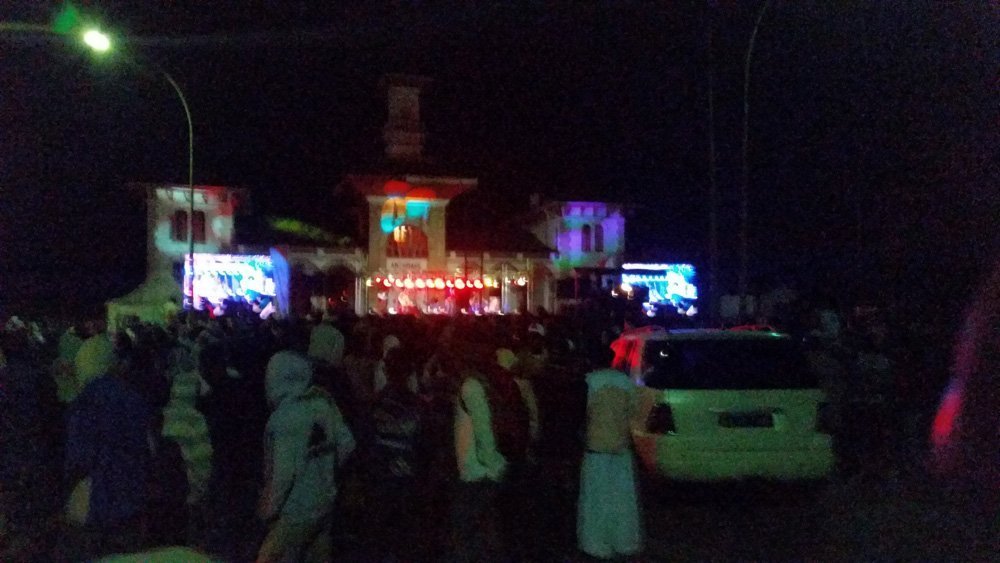

Driving west to Morondava
Proceeding the following day, we drove westward towards Morondava, a sleepy fishing village on Madagascar’s west coast. The drive from Antsirabe to Morondava really showcases how diverse and beautiful Madagascar is. The 400km drive pushes us from the highlands of central Madagascar to a semi-arid desert dotted with palm trees (ya I know, palm trees in desert??), to a tropical setting with lush green pastures and giant baobab trees only found in Madagascar. The setting changes so quickly but they are all so unique and beautiful, making the long pot-hole filled car ride a little more enjoyable.
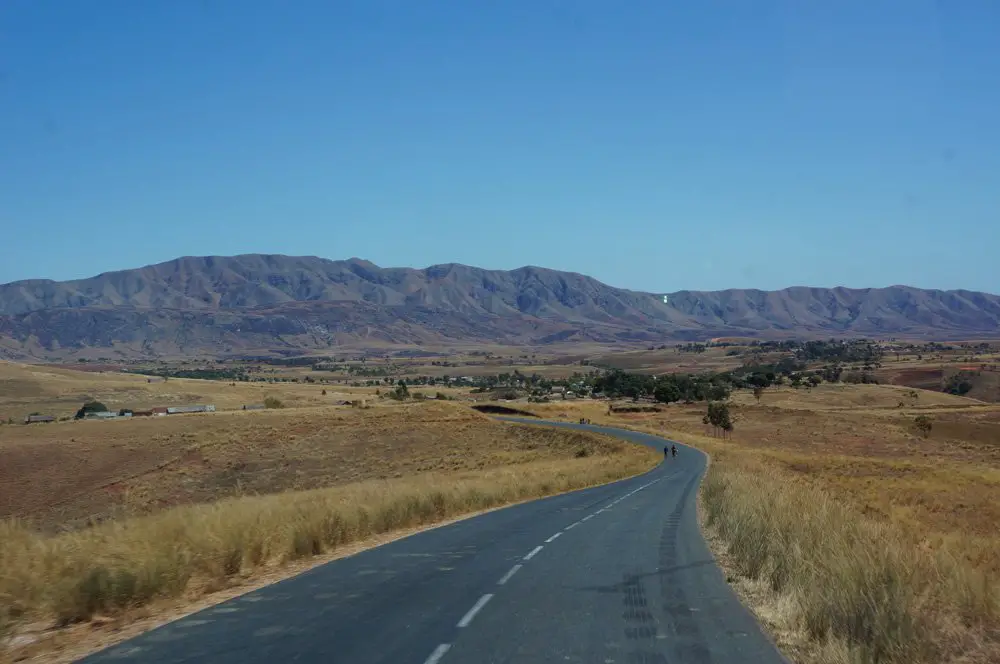
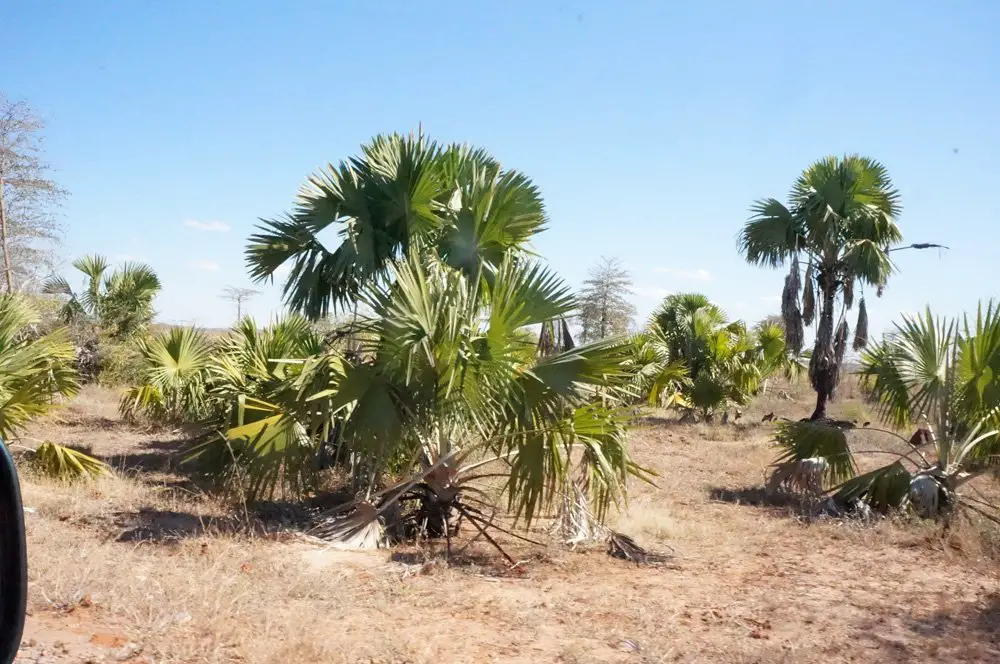
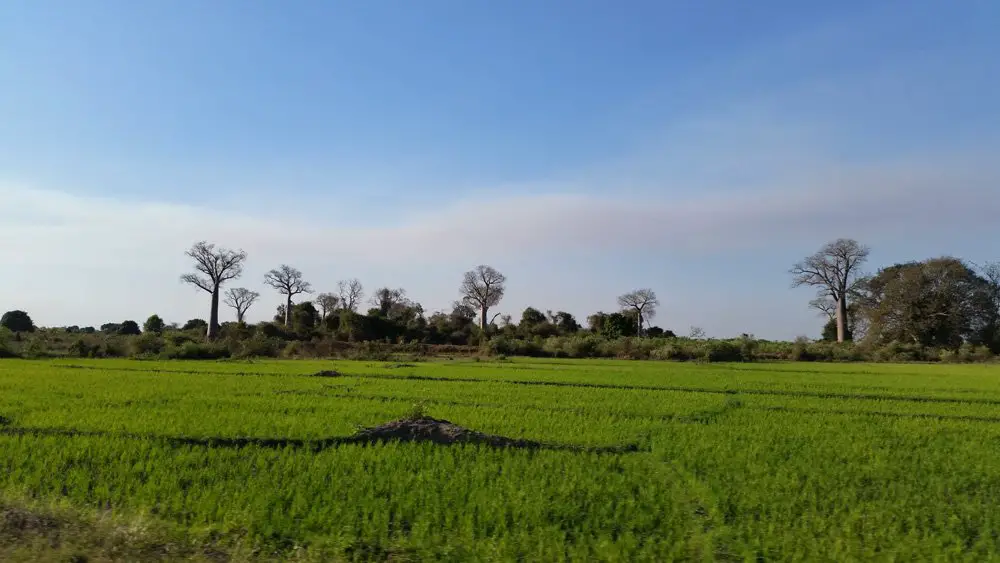
We overnight in Morondava at the Sun Beach Hotel, before leaving early the next morning to head towards Bekopaka, the gateway to the Tsingy National Park. We would return to Morondava after our Tsingy excursion but it’s a mandatory stop for a night for anyone wanting to visit the Tsingy.
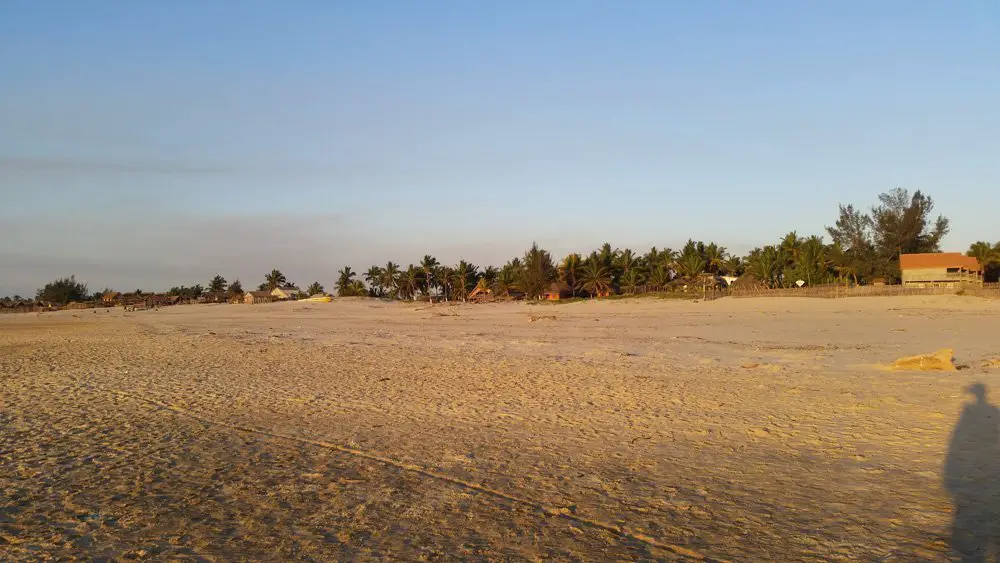
The road to Tsingy starts in Morondava as we go offroad, as if the roads weren’t bad enough already. We drive through the Avenue of the Baobabs, as it is along the road towards the Tsingy, where we stop and take a few pictures. It was during the middle of the day, there were no visitors but we would return after our time at Tsingy to spend a sunset at the Avenue of the Baobabs.
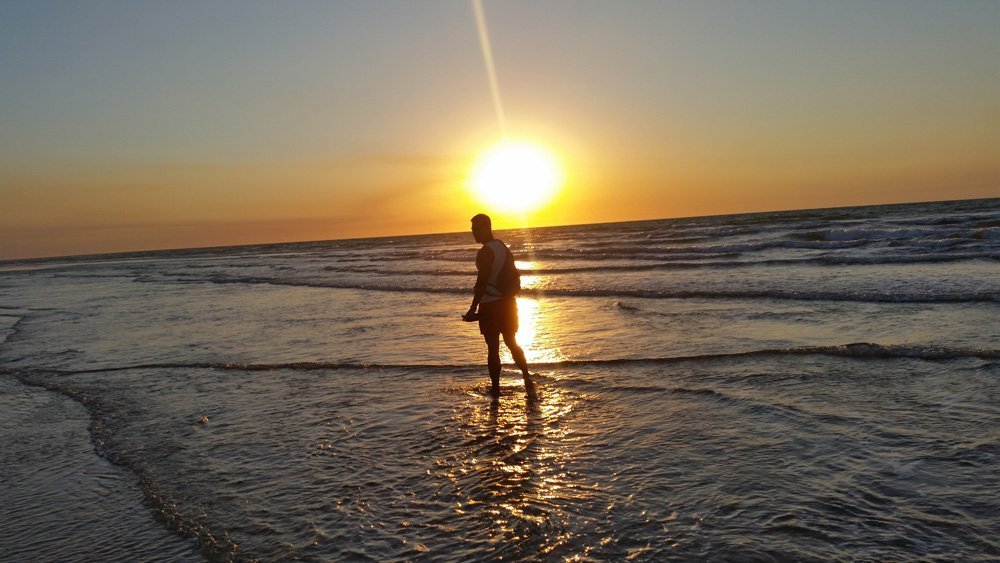
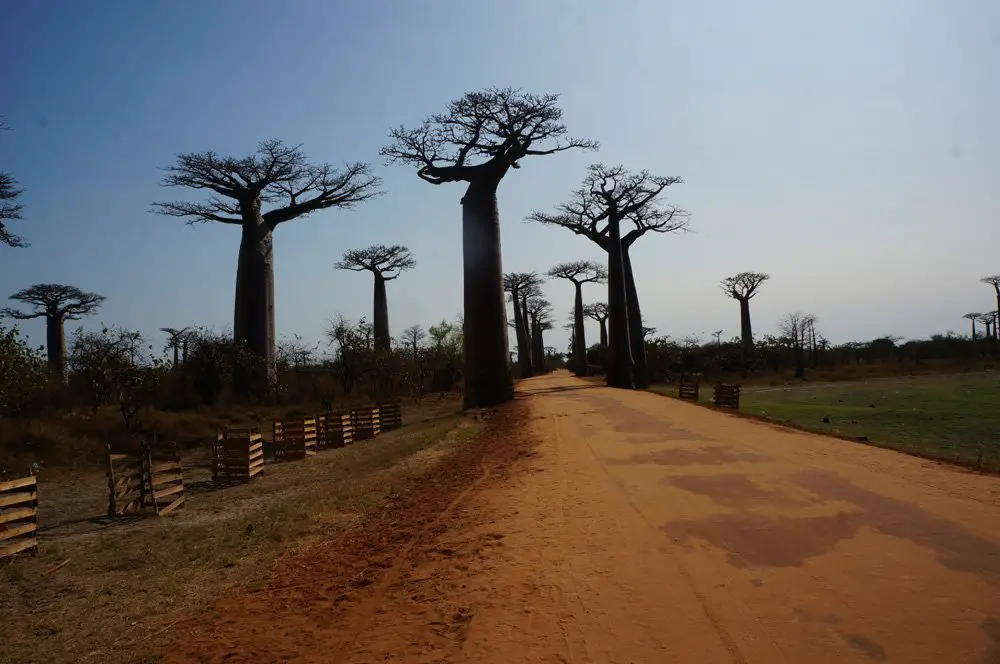
Ferry to Tsingy
As we drive through rice paddies, palm trees, and baobabs, our driver Serge tells us that the road would eventually stop because of a river and we’d have to take our car onto a ferry so it could take us to another road. Ferry? Really? All I see are dirt roads, and people herding their cows on our ride for the day. What ferry could possibly exist in this part of the world that could take a SUV?

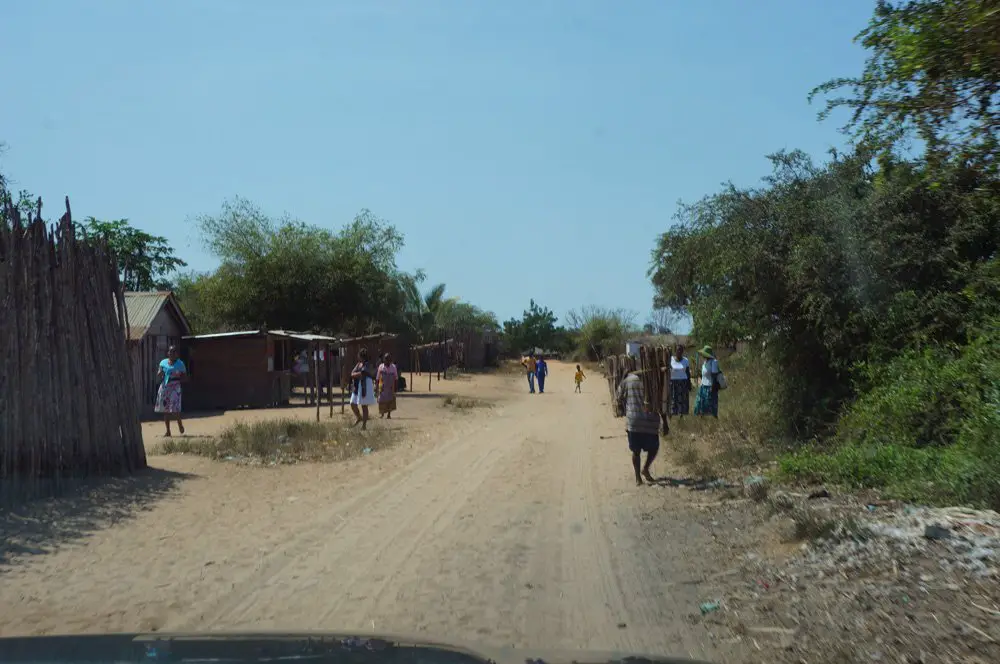
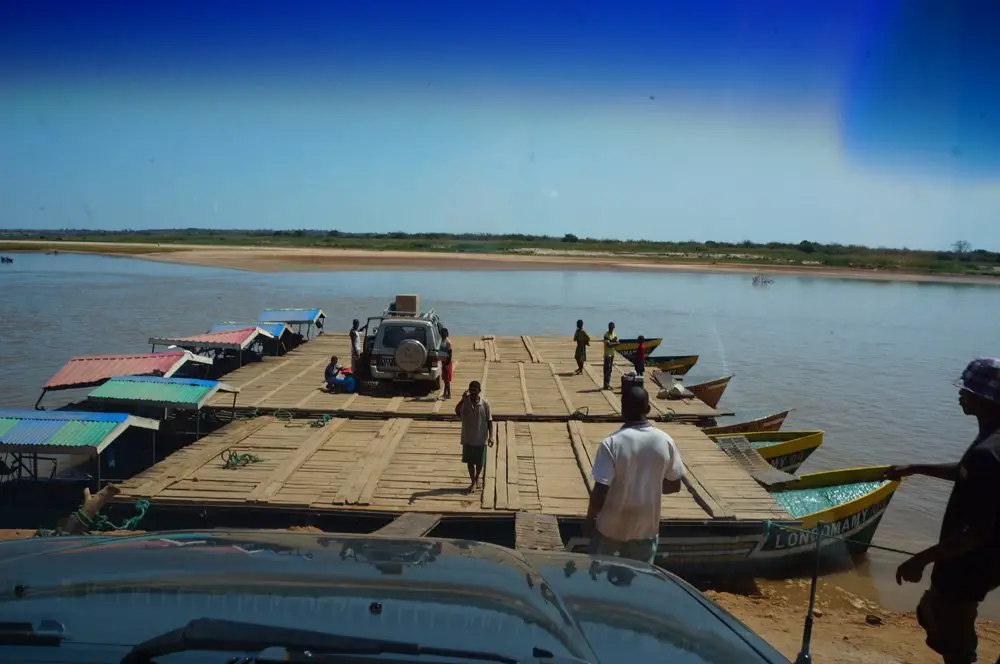
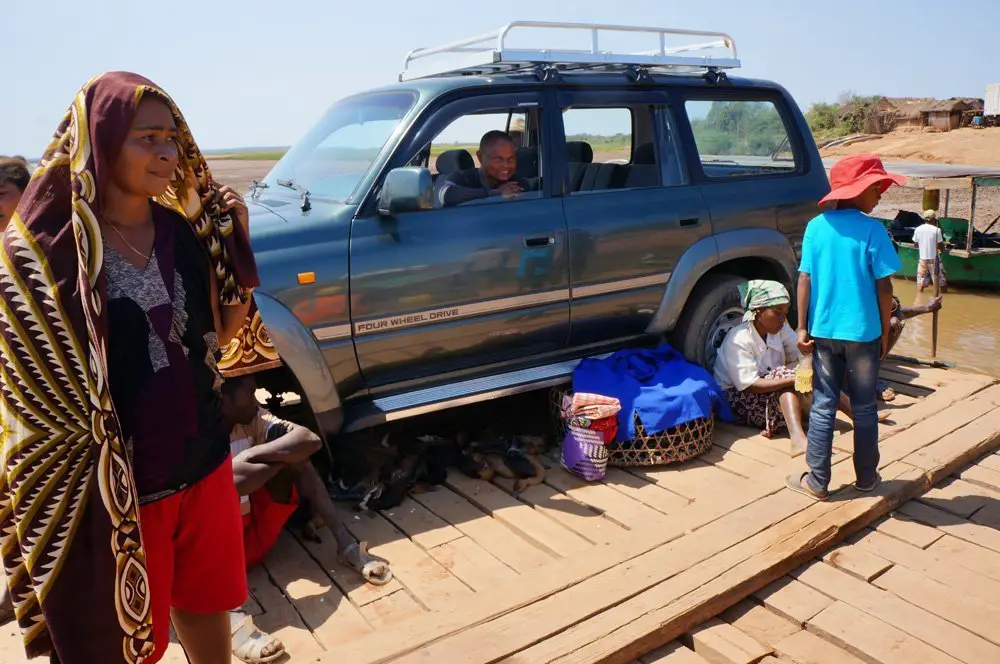

And a video
After three hours of driving, low and behold, we reach the ferry destination. Turns out, the “ferry” is two canoes joined together by a wooden plank!! I should have used my imagination a bit more I suppose. Our SUV drives onto the ferry, and we’re joined by locals with their ducks, chickens, and god knows what else. Can’t say I’ve ever had any experiences like this. The locals seemed bemused by us as there really aren’t that many visitors to this part of the world and one kid would poke at my friend’s arms saying “blanc” or white in French as my friend is on the paler side.

After docking, we grab a few coconuts from some locals for about $0.20 per coconut, and we proceed to have a delicious lunch at the local village. Seafood is abundant when along the coast of Morondava, and we had plenty of Gambas, these giant palm sized river prawns. Delicious! Our drive the next 4 hours was straight offroad with bumps, holes, and obstacles along the way. It took us four hours to drive 120km. Eventually, we arrived at another “ferry” stop where our car again got on a canoe with wooden plank, but this time, people just used poles to physically push the ferry to the other side!
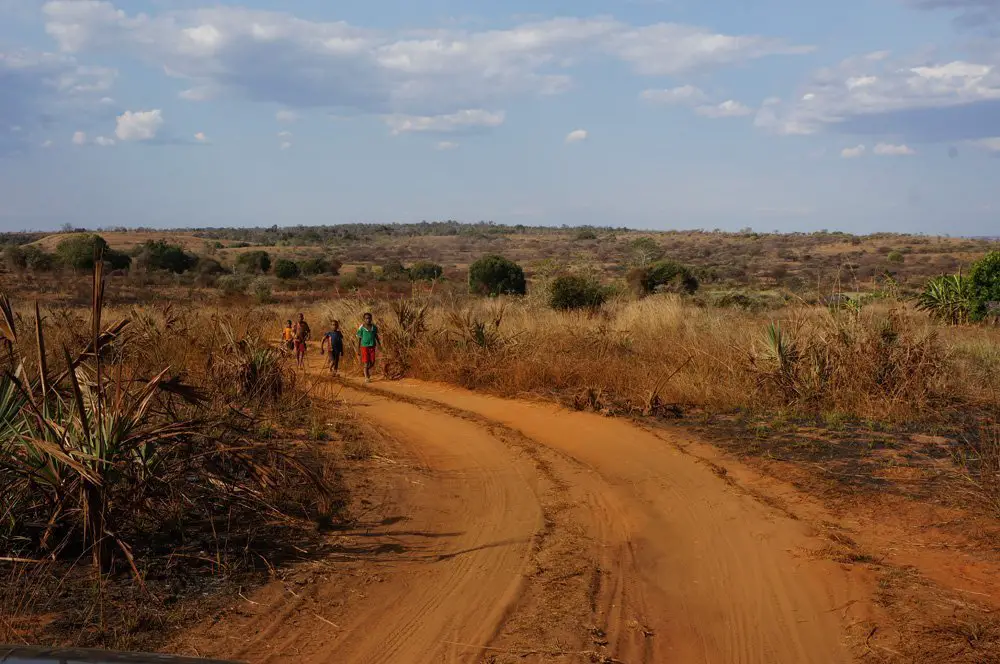
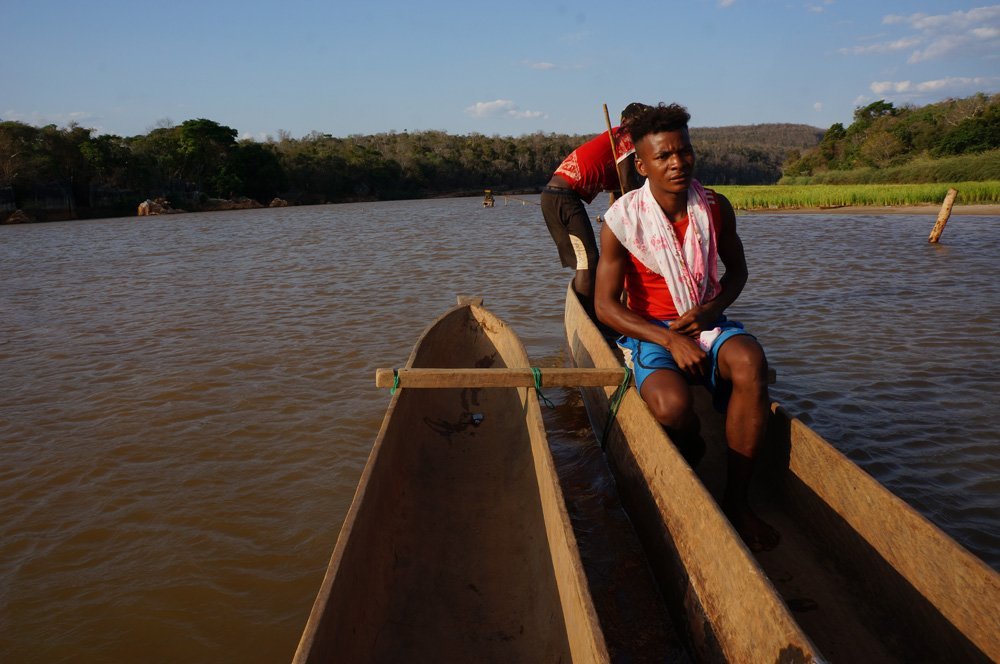
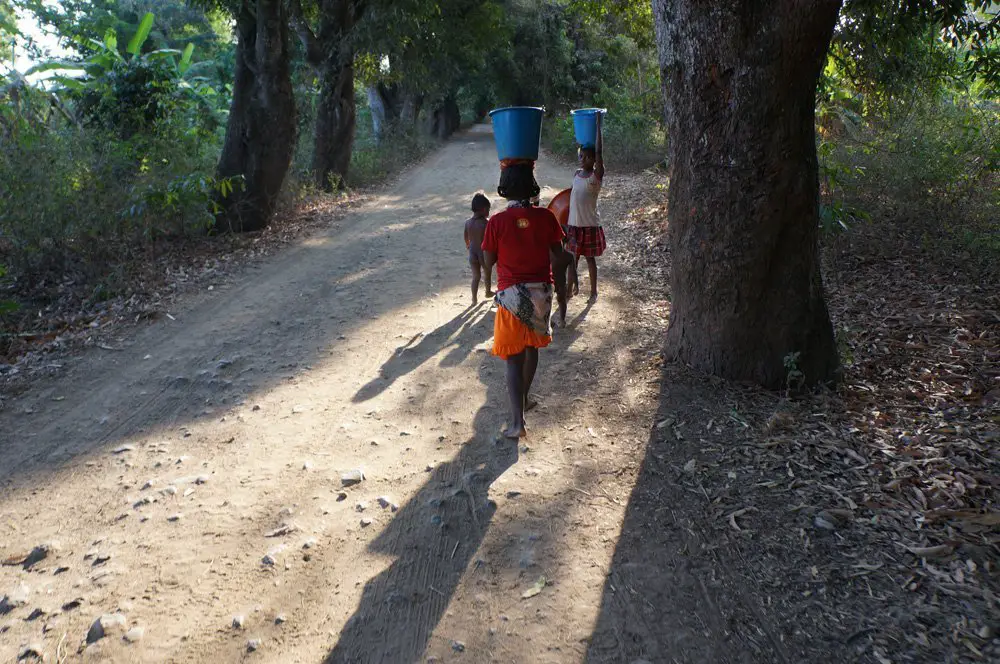
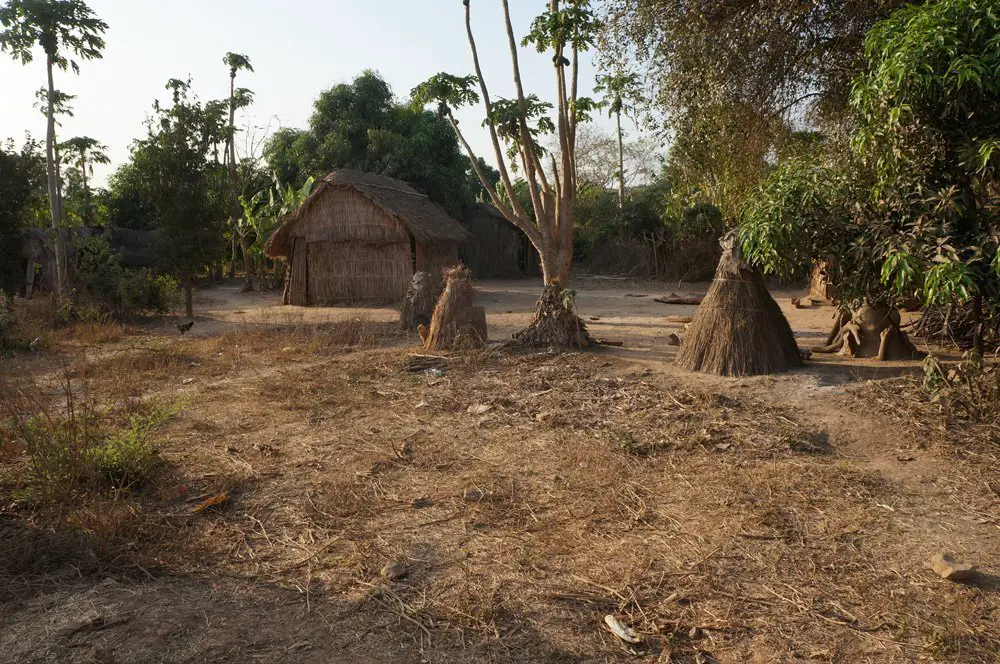
We finally reached the hotel in Bekopaka at 5pm, our stop for the next 3 nights. All in all, it took us half a day to drive from Antananarivo to Antsirabe, a full day from Antsirabe to Morondava, and a full day from Morondava, to Bekopaka. Not the easiest place to get to, and another reason why traveling Madagascar requires plenty of time, but it’d be totally worth it in the end.
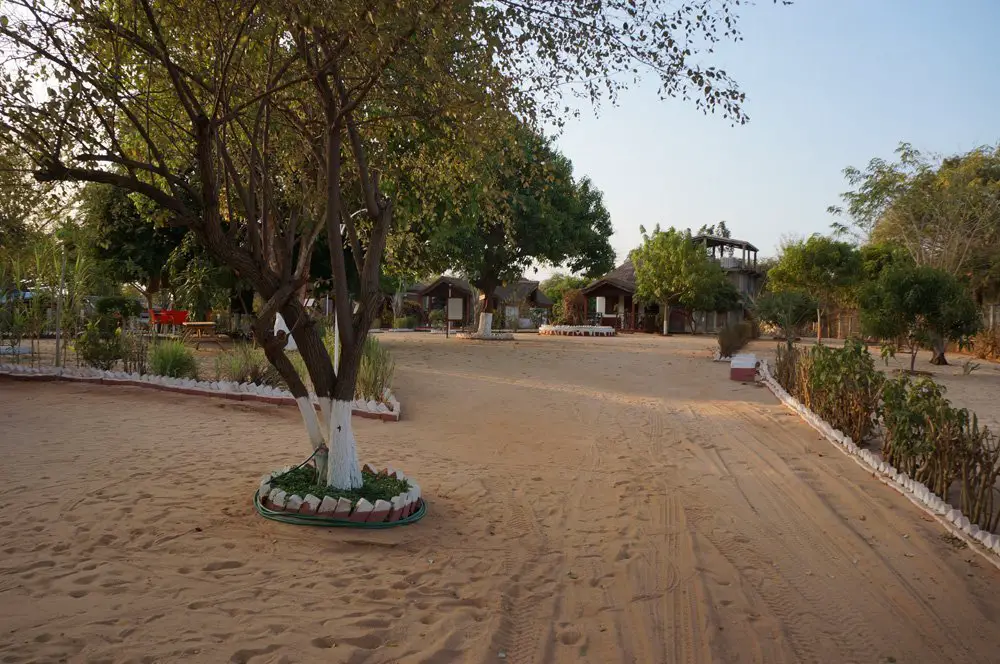
Tsingy National Park
Arriving in Bekopaka, we stayed at the Vazimba Hotel, a nice 3* option with a pool, large bungalows, and a good restaurant. It was the perfect place to come back to after a long and tiring day of hiking around the park.

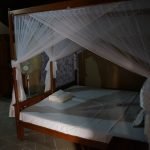
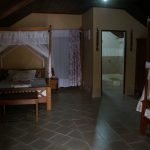

The next morning, we wake up early, eat a breakfast, and are out the door at 7:30am. In “town”, if you can even call it that, is the tourism office for the Tsingy Park, where everyone must go in the morning to pay for park fees and a guide. It is absolutely mandatory to have a guide to do the hikes here as it is not for the casual hiker.
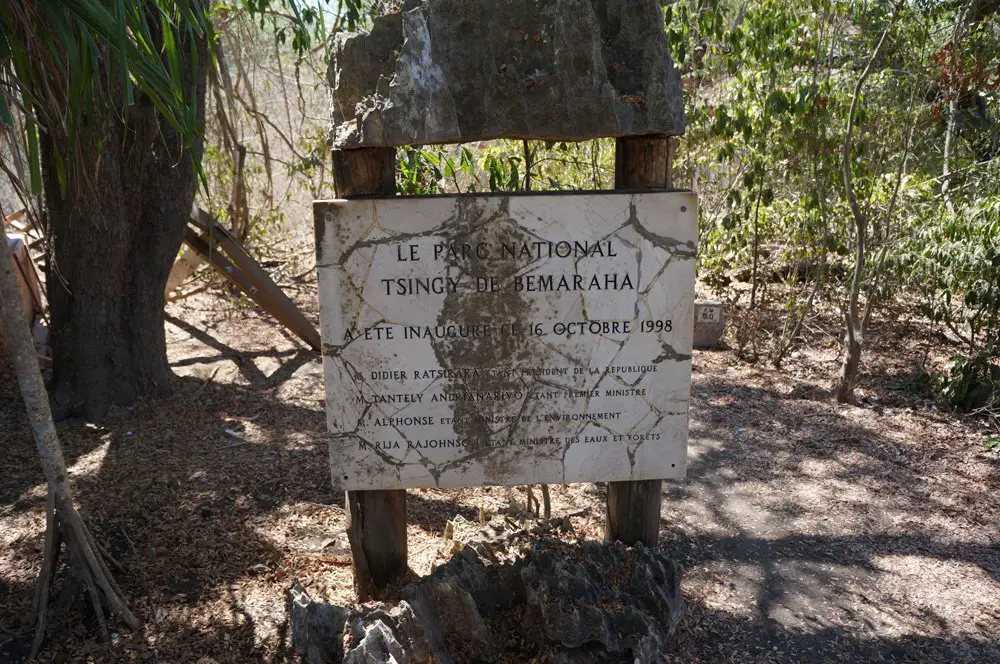
Arriving at the park office, we made sure to ask for an English speaking guide, which we got. Apparently only 10% of the guides speak any English (everyone is French), and having a guide we can communicate with makes the hike much more enjoyable.
There is a broad selection of different hikes that can be done here, ranging from 2 hours, to 8 hours. The two main areas to visit in this park are the “Big Tsingy” and the “Little Tsingy”. The two have to be done over two days and of course, we decide on the longest, most difficult hikes to do in both areas. All in all, for two days hiking, and park fees, we paid about 230,000 Ariary (90$) for the both of us.
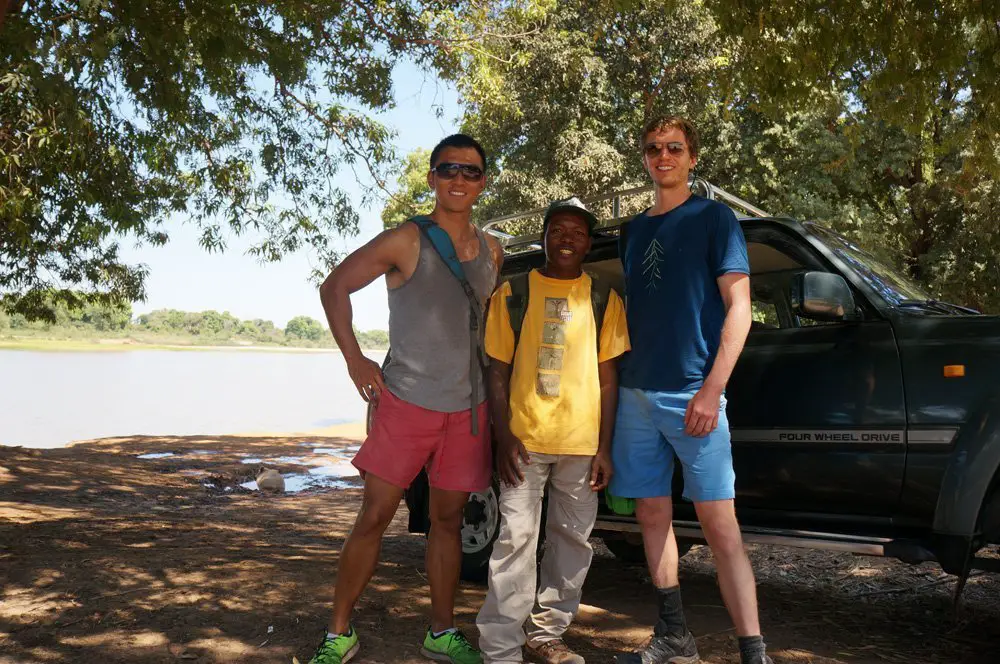
Hiking the Big Tsingy
Once everything was paid, one guide joined us in our car and we drove to the launch point half hour away. We walked through the deciduous forests, seeing some lemurs along the way. Eventually, we reached the base of one of the large limestone rocks and how grand it was. At this point, we needed to climb up the rocks. We’re strapped in our harnesses and off we go!
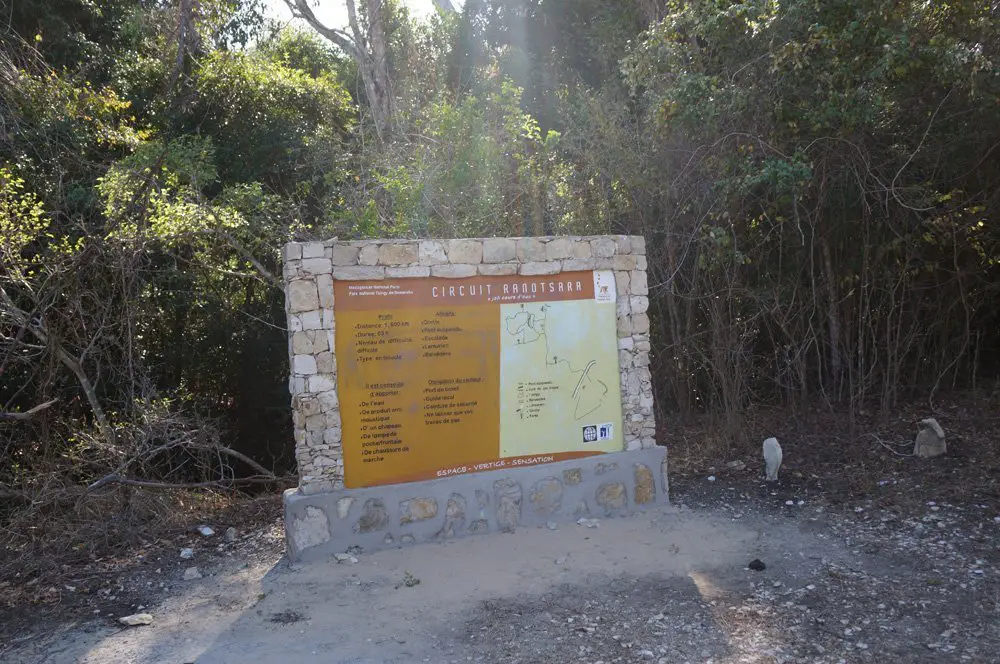
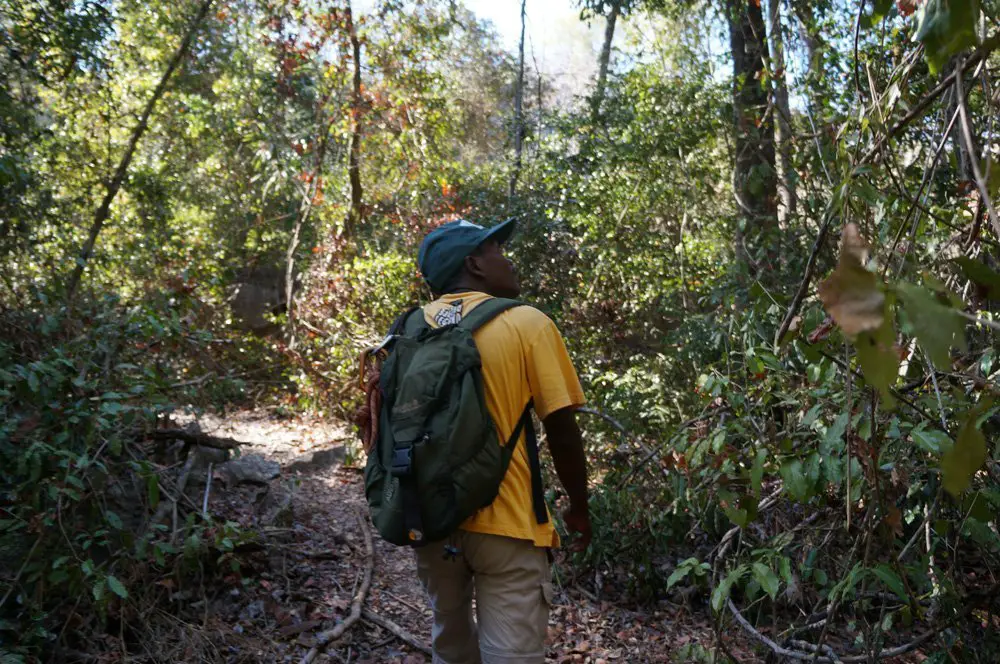
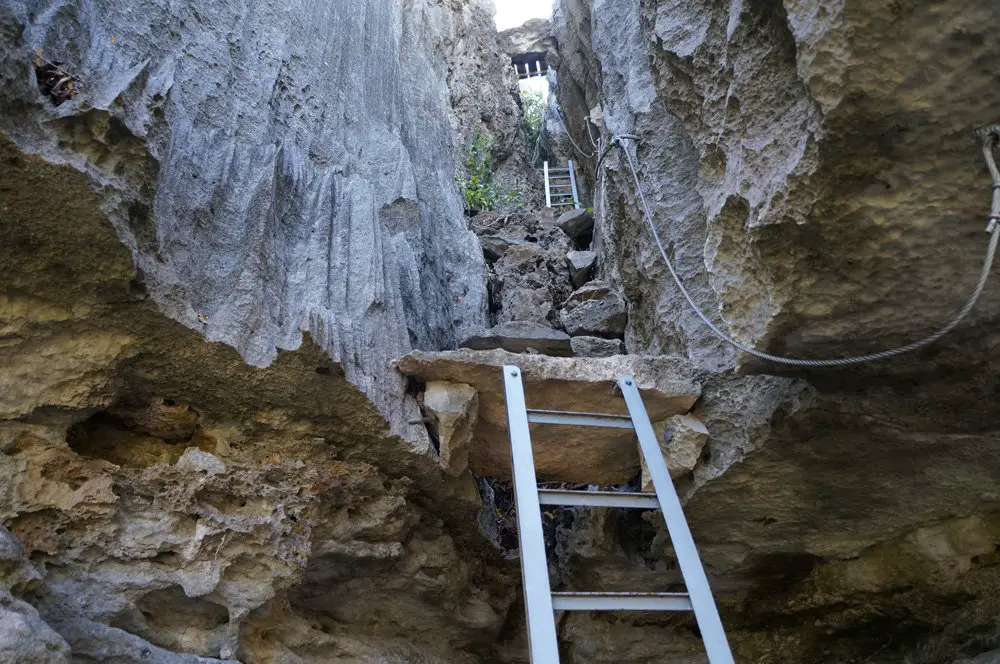
The climb to the top can be scary for some but the peak is only 100m high so Vertigo isn’t a problem. The rocks here are as sharp as it looks, like a knife’s edge. Surprisingly, for a place in the middle of nowhere Madagascar, the rock climbing infrastructure here is top notch. At no point, did I feel like I was in danger of falling.

Once we got to the top, WOW. Just wow. The view is INCREDIBLE. The pictures don’t do it justice. With the strange limestone rocks and trees poking into the sky, I felt like I was on another planet. Plus, there was no one tourists around us so we felt like we had this amazing place to ourselves. One can’t take enough pictures in this place.
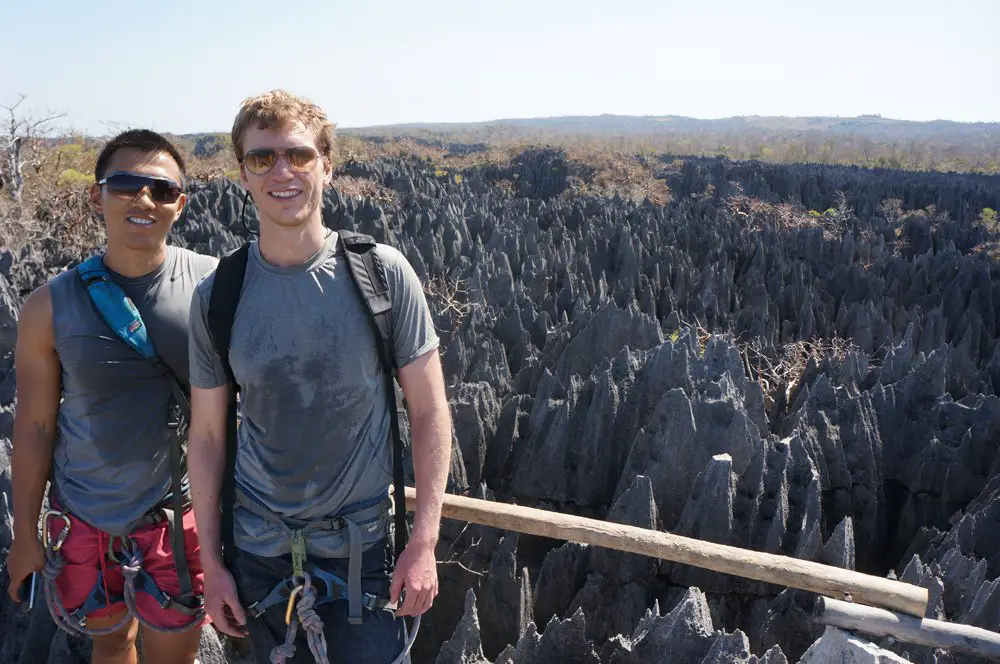
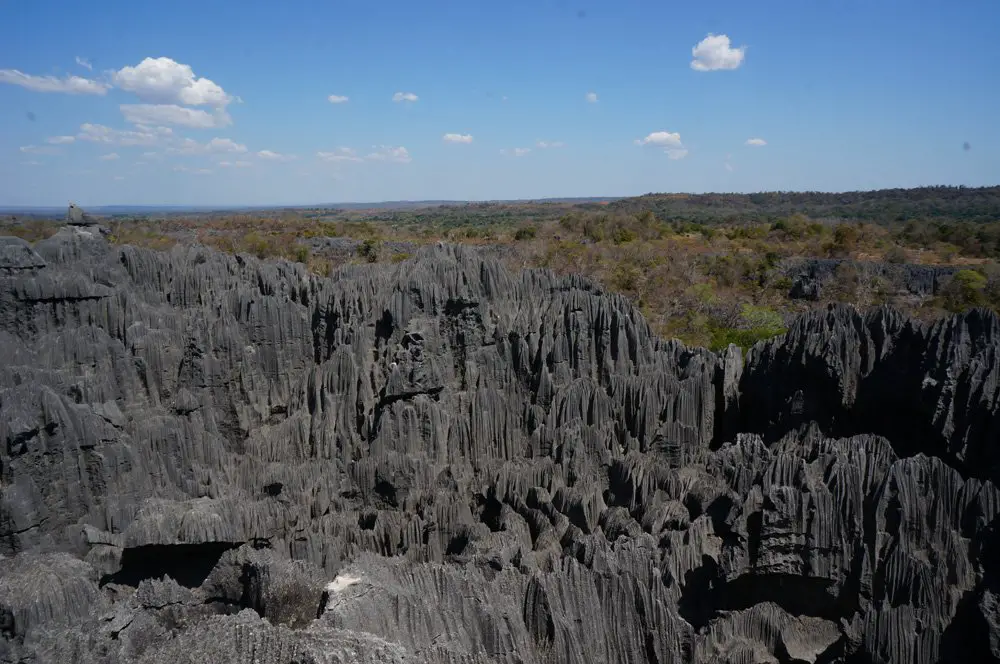
We walked through some suspension bridges that felt less than sturdy, but are in fact very sturdy. After spending a few minutes and taking countless pictures, we descend and hike towards the caves. These caves have only recently been open to the public. The hike lasts 1-2 hours and is not recommended for the physically unable. There are plenty of tiny holes and crevices that need to be traversed. This place is more rustic than the Cango caves in South Africa and has none of the tourists.
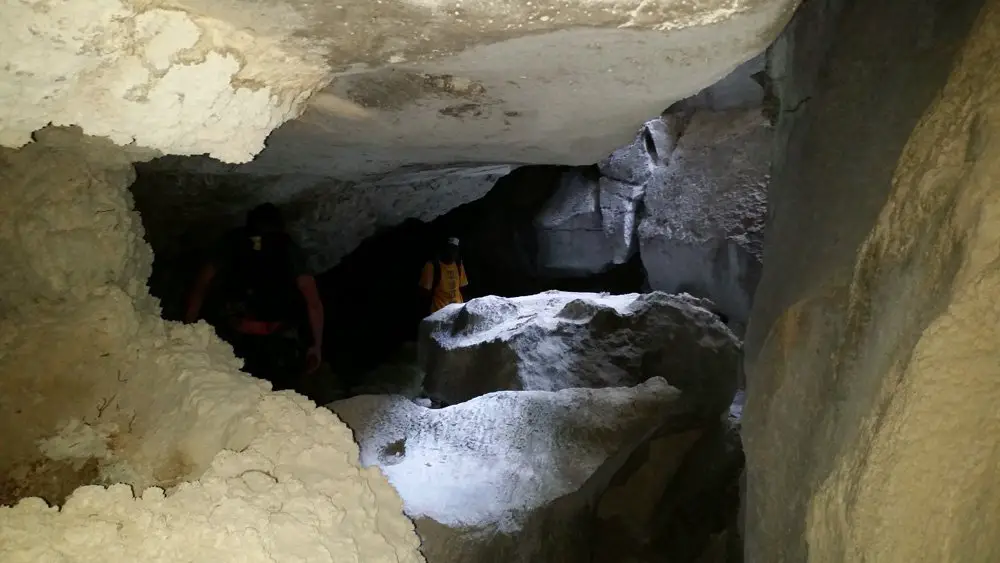

Once we finished the caves, we stopped for a quick lunch before climbing up another peak, seeing plenty of lemurs along the way. The second peak was even more incredible than the first. It was in the middle of the park so the panoramic views afforded here are even more spectacular in my opinion. We saw other tourists for the first time, two old French couples. Impressive. The climb up to the peak, and the focus needed to avoid stepping on the sharp parts of the rocks is not easy. The rocks are so sharp that taking one wrong step can mean a world of pain for the feet.
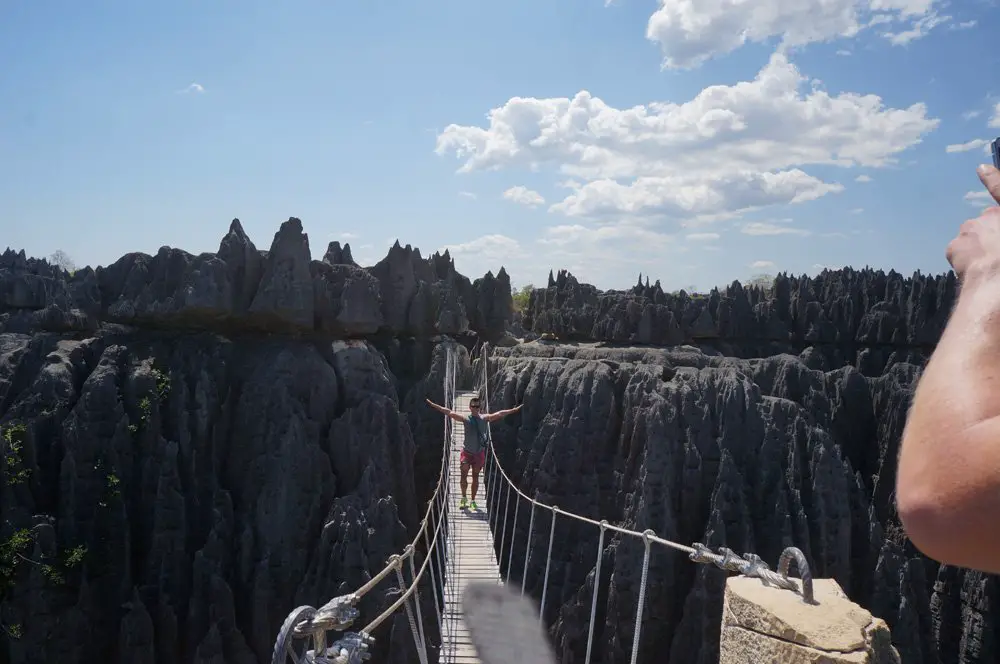

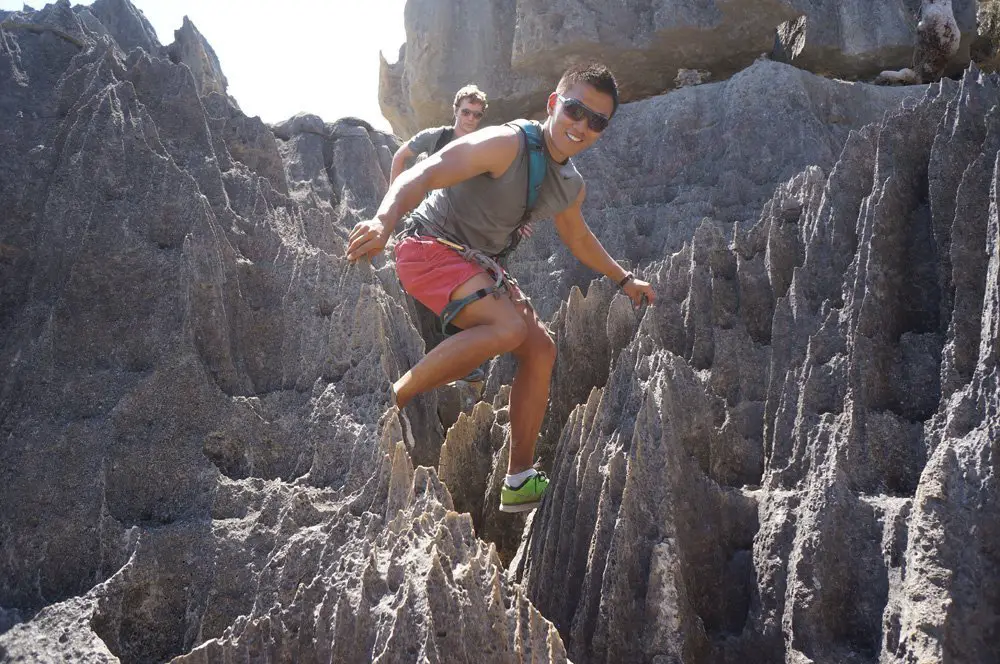
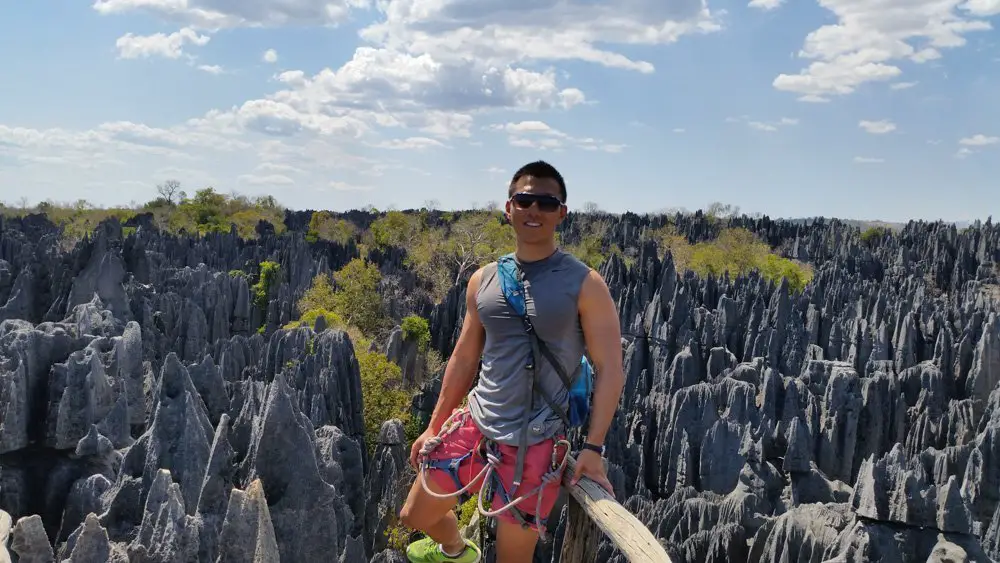

After admiring the views from the top of the Big Tsingy, we climb down one last time and walk out of the park. We see a few more lemurs, and it is mostly an uneventful walk until we reach the exit where our driver, Serge, is waiting for us. All in all, the hike took about five hours for three circuits (two viewpoints, and caves).
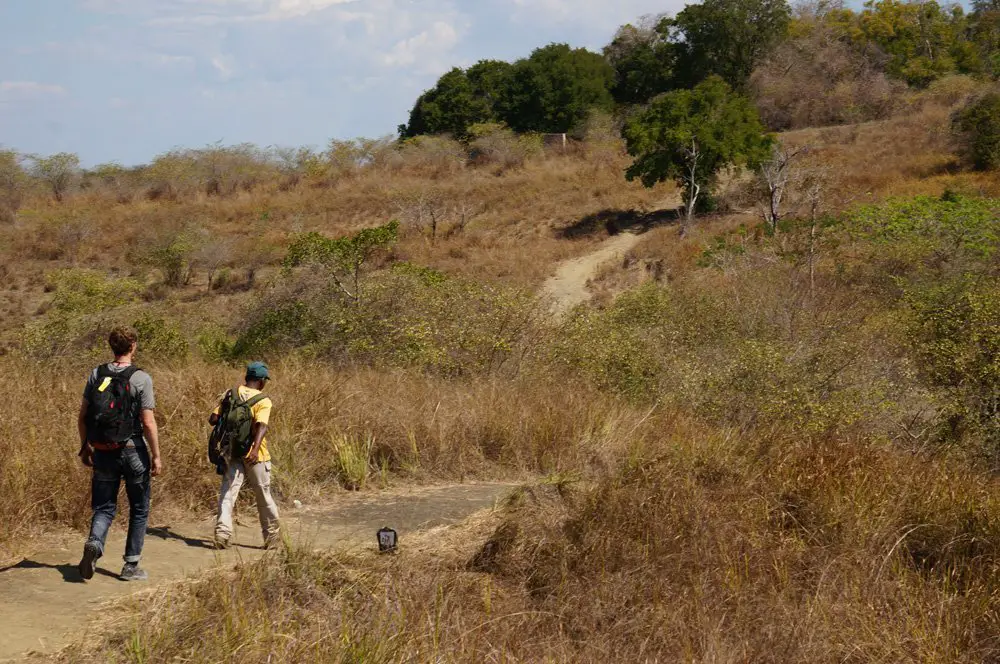
Hiking The Petit Tsingy
The next morning began just as early as our hike started with a relaxing pirogue (canoe) ride down the Manombolo river, where we had seen our car float across on a wooden plank two days prior. We started early to avoid the heat. We paddled through the calm waters, while admiring the deep gorges surrounding us. We saw more tourists doing this circuit as the petit Tsingy (small Tsingy) is an easier, less strenuous hike.



Our pirogue ride lasts an hour and we reach our starting point. We hike up the side of the gorge and eventually reach the petit Tsingy. The petit Tsingy is the same limestone rock formations portruding into the skythat we saw a day earlier but on a much smaller scale. No rock climbing is needed here and there are no trees growing in between the rocks. I think (but not sure) this is the more popular hike as it is less strenuous.
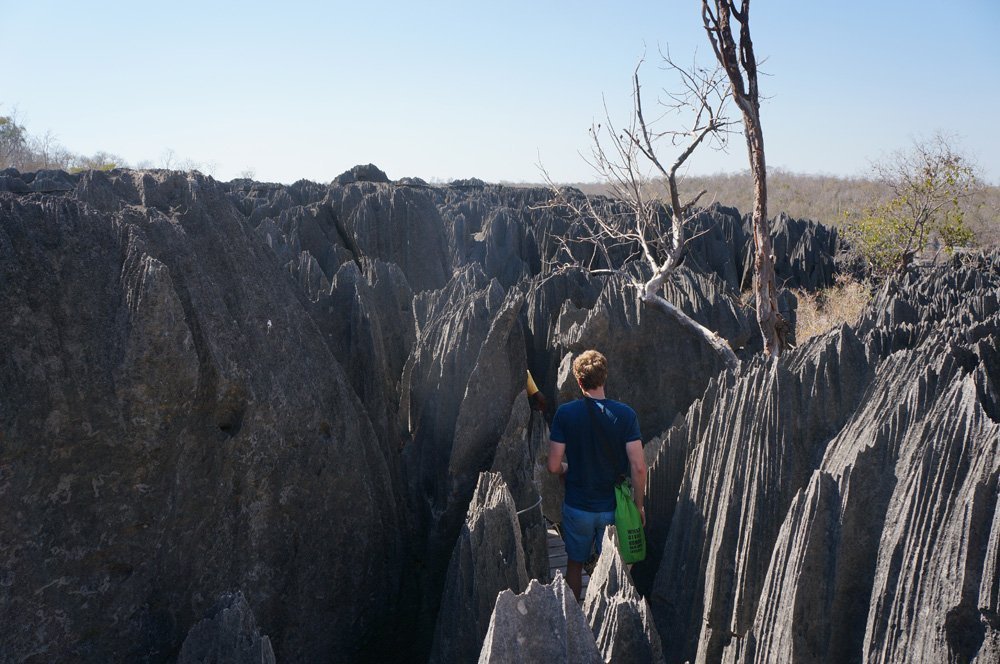

The petit Tsingy is a shorter walk and we elected to do the most strenuous hike here which means we’d walk back to the starting point via the route the pirogue took. Having already had a long hike the previous day, I wouldn’t recommend this approach. Best is to just take the pirogue ride to the petit tsingy, and take a pirogue back. You won’t miss out on much!
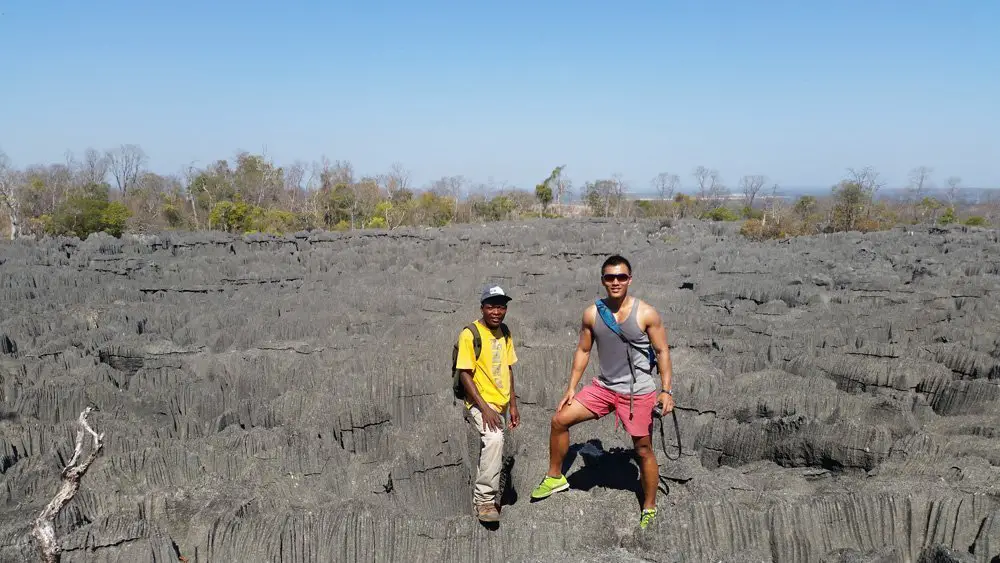
We finished our hike at the Petit Tsingy around 1pm and took a well deserved relaxing afternoon at our hotel.
Playing football with the locals
We brought our American football on our Madagascar trip and decided we’d go down to the local soccer field in Bekopaka and see what happens if we started throwing it around. Yep, we received an immediate following from all the kids. They had never seen an American football before as soccer was the main sport all the kids played. We were instant celebrities and had a good fifty kids following us around within a half hour trying to throw the ball. Kids would point at us and yell “Vaza, Vaza!” (Malagasy for foreigner), and the kids that could speak French would ask me questions about what we were playing.
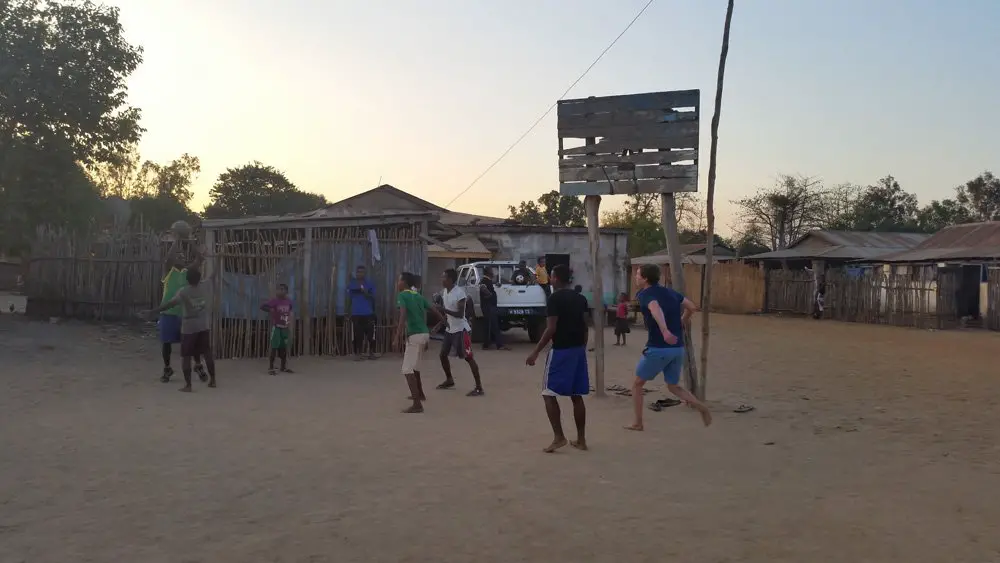
This would probably be the first and last time these kids would ever see an American football! Great end to our time at the Tsingy. We left the next morning for our drive back to Morondava.



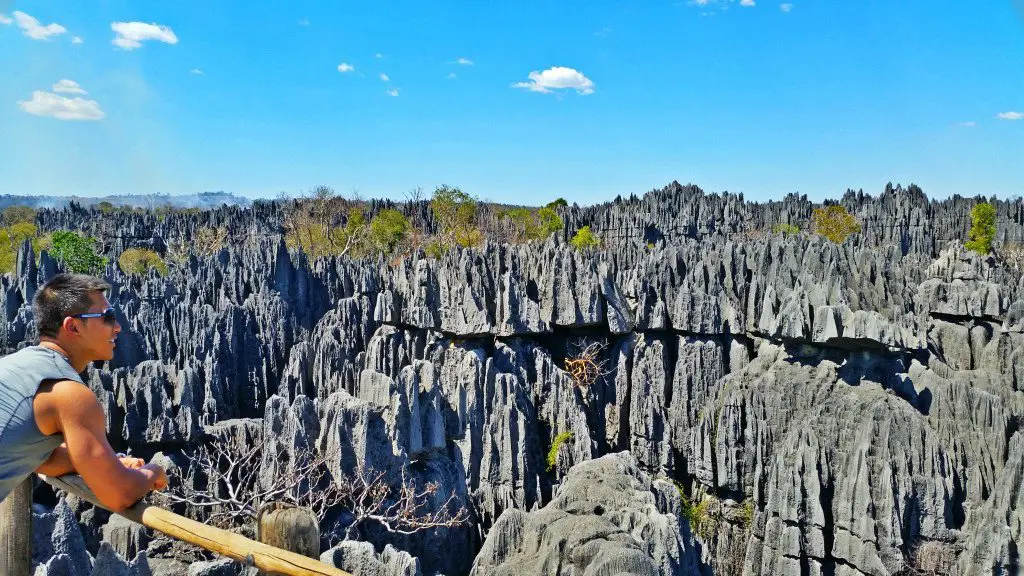
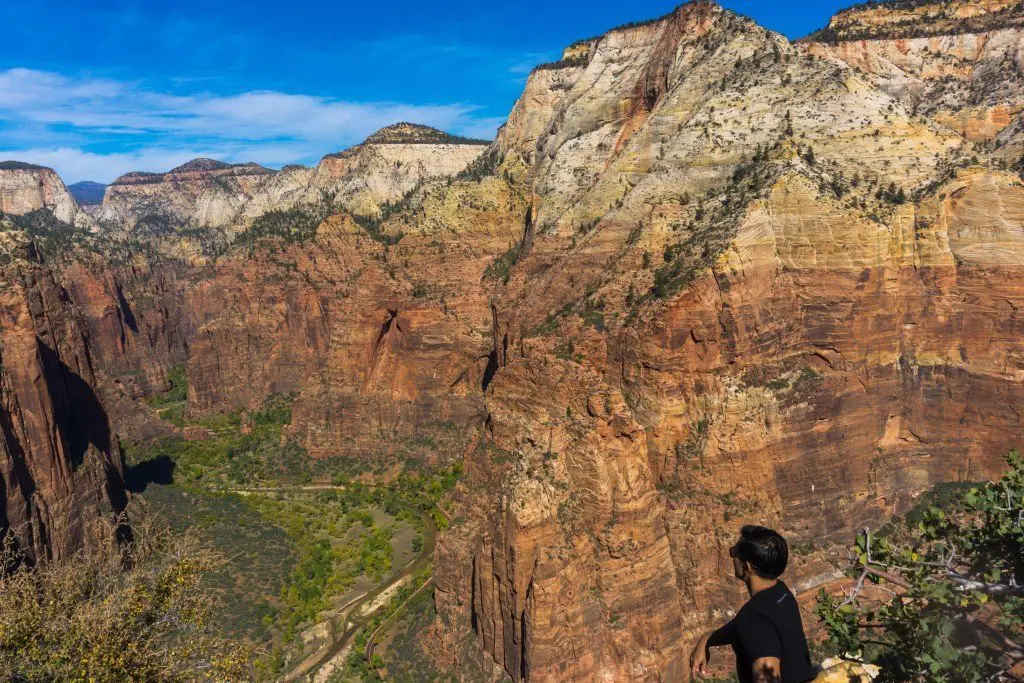
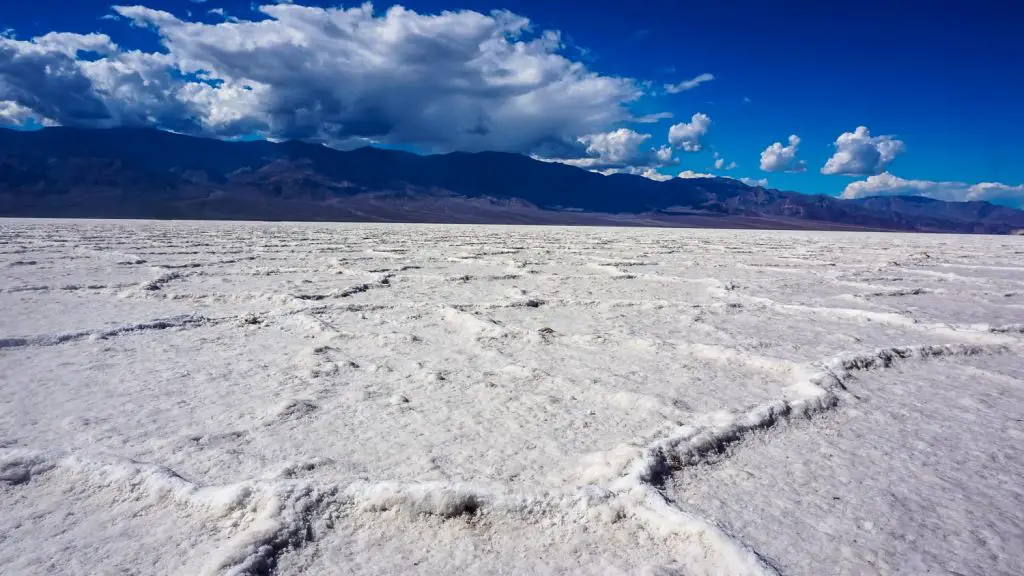
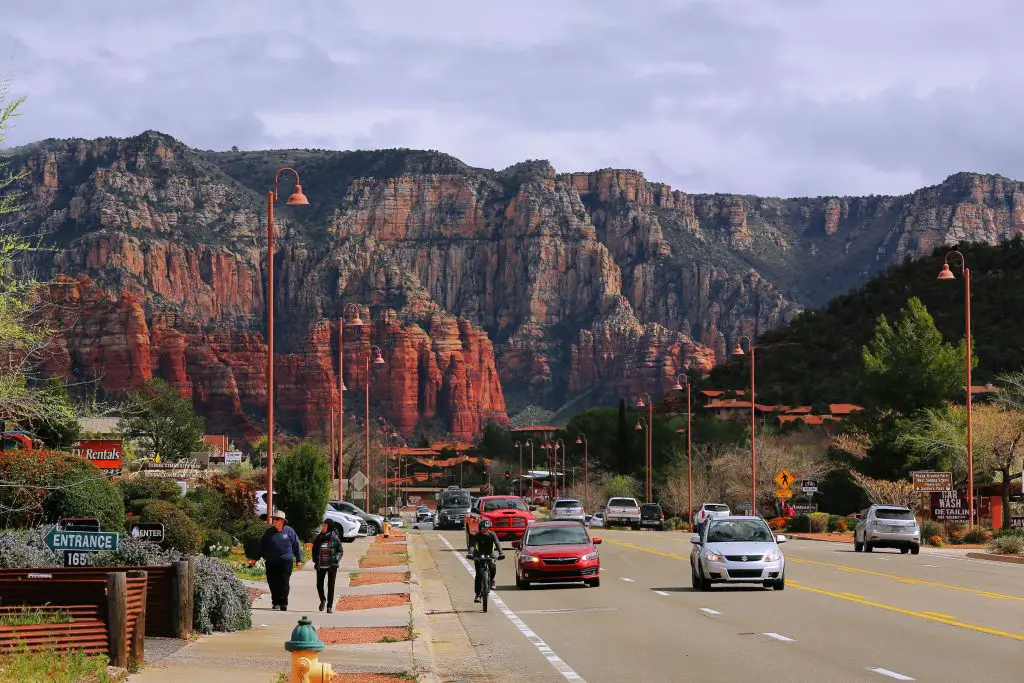
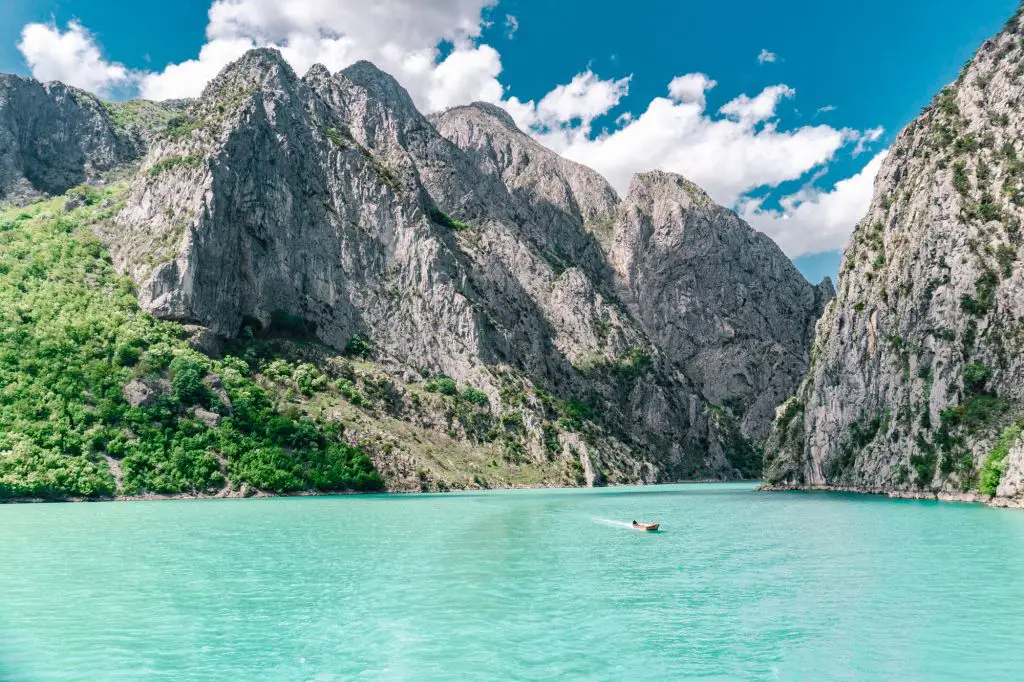



Amazing blog! Thank you so much!
Thank you!
Hi Johnny!!
I will be in Madagascar in a week! So excited!
What gear would you recommend for the tsigny hikes? We are just wanting to not overpack, but make sure we have what we need.
Thanks!
Hi Erin! I don’t think you need anything in particular. Comfortable shoes, a bag for water and some snacks is all you’ll need. And of course a good camera too!
Excellent. So hiking boots are not essential? We could get by with runners?
Definitely not essential! You can see I am wearing running shoes the entire time. You’ll see plenty of other people with hiking shoes but I guess most people like to be over prepared or they just feel more comfortable with them. Either way, I don’t think they are necessary!
Thank you!!
Hi Jhonny,
I plan to visit Madagascar in December for 10 whole days and hence wanted to know if Tsingy NP would be open then? I read about it and in a few places they say that the road would be washed off and hence, this NP would not be possible. What is your view on this?
And should we book hotels in advance? Any site you would recommend for that?
Plus could you let me know the best NP as there are quite a few
Thanks,
Aditi
Hi Aditi, I have definitley heard of Tsingy being inaccessible starting in December. It would be best to contact a tour operator in Madagascar just to confirm. I know starting January it is definitely closed but December is still in the shoulder season.
I would recommend booking accommodations before you get there and any tour operator will be able to help with that. GMT+3 is the only company I used and they were great. Enjoy!
Tanx for your beautiful and complete description, if we choose small TSingi could we see suspended bridge yet or not ? Is that different directions?
Hi there, the suspension bridge is only on the Grande Tsingy!
Thank God I found your blog! Seriously! I have been wanting to go to Madagascar for aeons and have been tracking the flight prices and reading what I can. But I was just about to give up on going this year, having read the terrible reviews of Air Madagascar and how often they change the flights (we were going to fly with them as then the domestic flights are much cheaper). I was prepared for this on the internal flights – but not on the international ones as we have a tight deadline. Anyway, you have done at least half of what we plan to do, so some questions please! Did you book your car and driver ahead of time? and if so, stating what? (did you have the same driver all the time, and he just ‘rest’ when you were hiking etc.?) And ditto hotels, or did you book anything once there? We were hoping that we react to what we hear on the ground and change plans if necessary. We are a family of 5 and are planning to travel independently and hike in Tsingy, see the Baobabs, and go to Sainte Marie like you, but also hike in Andringitra National Park instead of Isalo. If we have time, we also hoped to do some river rafting and see lemurs/rainforest – but have to check budget and logistics as,a s you say, the infrastructure is poor. Would you have any other advice for us (e.g. on hotels near to airport if we are arriving at night? We are also going in July/August so weather will be different. Did you hear anything about which National Parks near to Tana are the best? (we like to avoid mass tourism at all costs but guess that shouldn’t be a problem in Madagascar?) Thanks!
Hi Tessa! Thanks for reaching out. Make sure to also check out my other Mada posts, especially this one https://johnnyafrica.com/madagascar-travel-guide/
Nevertheless, I booked everything before I arrived. You can either book “tours” or plan it yourself. I’d recommend the latter option if you are comfortable with that type of thing as you’ll save loads of money. I used a tour agency but ONLY to book the car and driver. I told them the places I wanted to see, and they helped make hotel reservations for me (which I only paid when arriving at the hotel). The drivers just drive you around, but they are also a great resource for Mada travel as they’ve normally been driving for years.
They will just be chillign when you’re doing your hikes. They will stay in local style hotels and eat local style meals while you stay in a more western friendly hotel. It’s all included in the price of the car. Think of them as like a chauffer almost. The most popular and easiest to reach rainforest from Tana is definitely Andasibe. It’s also the most touristy as it’s super close and has a place where you can play with lemurs but most touristy in Mada doesn’t mean much!.